On 21th November 2022, an ancient shipwreck near Hengsha waters of the Yangtze River Estuary finally saw light of the day as it has been underwater for more than a century and a half.
The shipwreck, dubbed the Yangtze River Estuary No. 2, is one of the largest and best-preserved ancient wooden shipwrecks ever discovered in China and even in the world. The salvage operation marked a new historic breakthrough in the area of underwater archaeology in China.
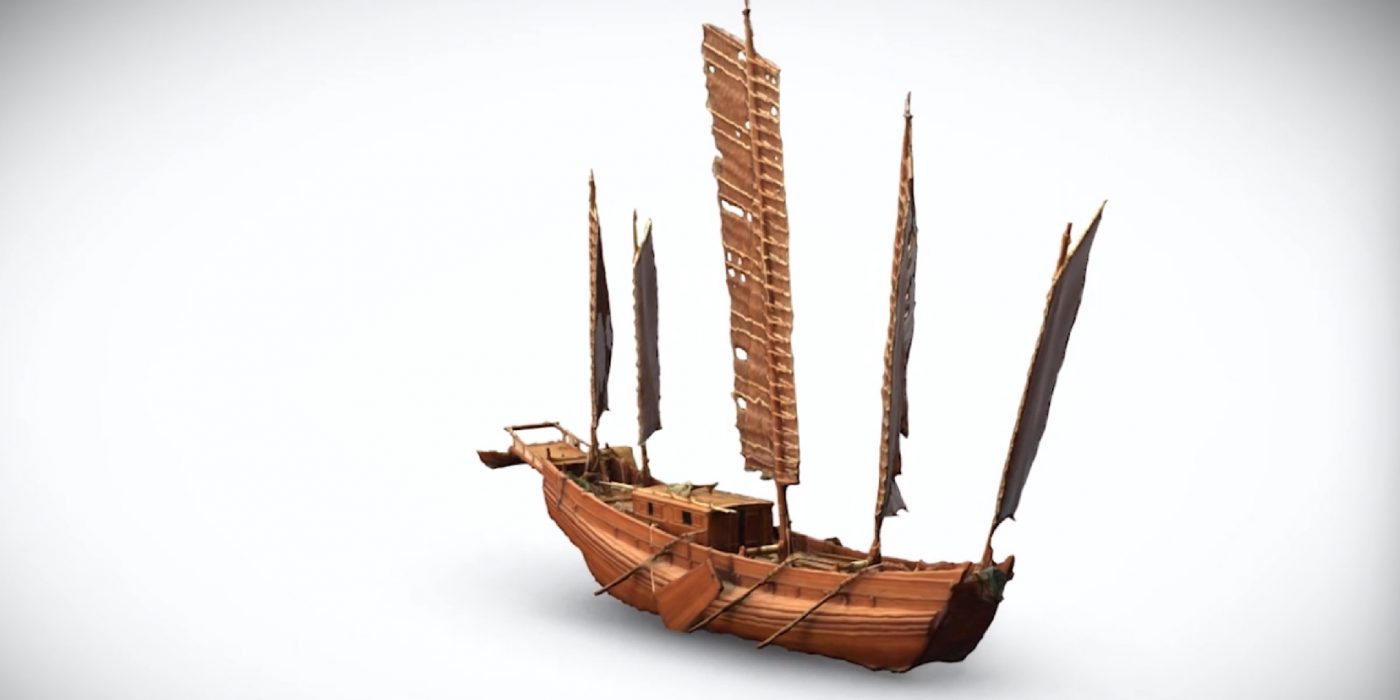
(source: The Paper) Assimilation diagram of Yangtze River Estuary No. 2
Back to the basic. How does this happen? How is this possible?
As this shipwreck is so named No. 2, one might ask about its predecessor, No. 1. In 2014, underwater archaeologists detected a sunken iron vessel, named as Yangtze River Estuary No 1 Ancient Vessel, via sonar technology.
The year after, as the scope of their scan expanded, a wooden shipwreck, aka. Yangtze River Estuary No. 2 was found underwater at a depth of 5.5 m below the seabed.

Solar scan that has found Yangtze River Estuary No. 2 (Photo: Xinhua)
Another 7 years, we saw more underwater archaeological investigations, and more details appeared: the ship was 38.1 meters long and 9.9 meters wide, with a total of 31 cargo chambers, most importantly, it is believed to be a merchant ship dating back to Emperor Tongzhi (1862-1875) of Qing Dynasty (1644-1911).
Early March of this year, a salvage project was officially started.
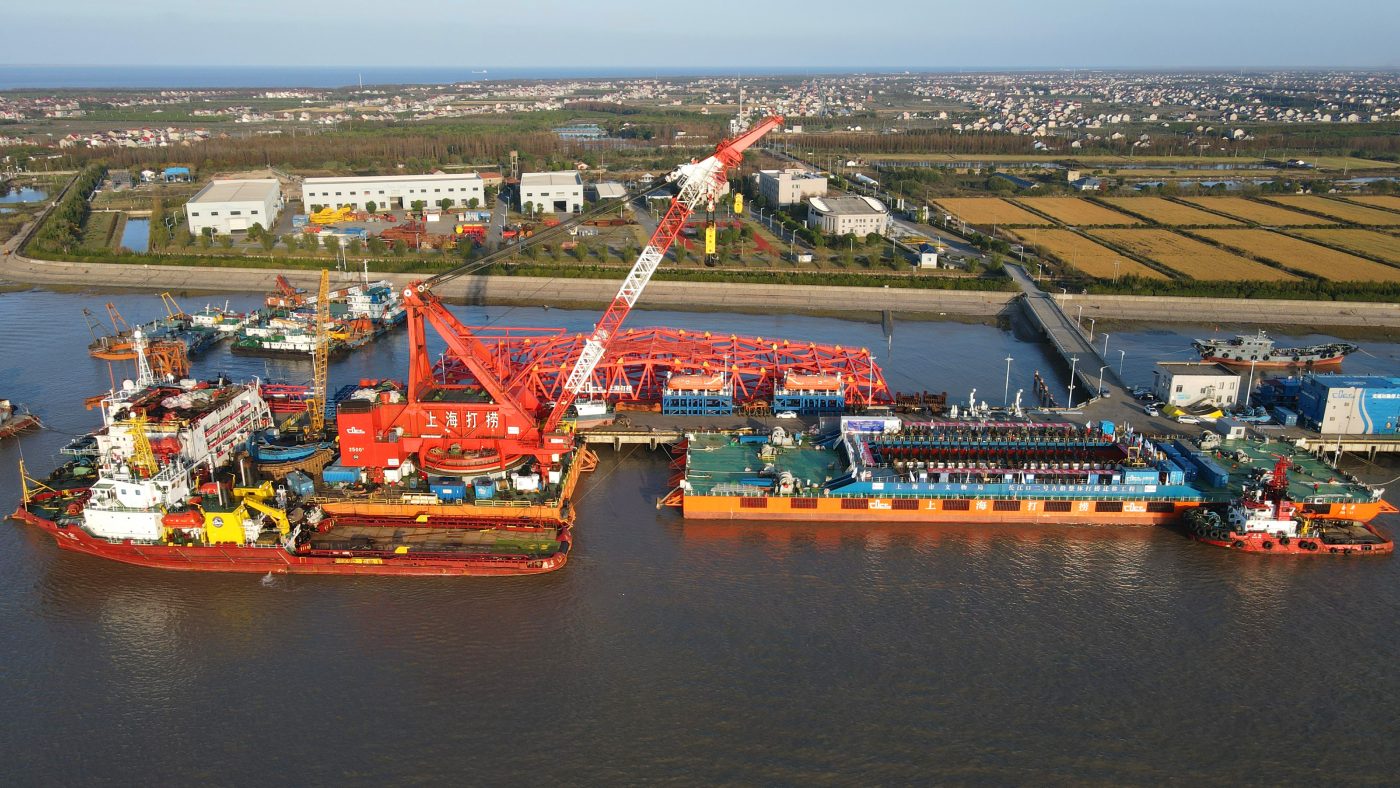
(Photo: Xinhua)
2 workboats, Dali and Fenli, were built for the project; they arrived at the shipwreck site by early June and mid-July, respectively to take up the assigned task.
Fenli was tailor-made for the salvage operation. It has a unique design that allows the workboat to open up in the middle, where there is a moonpool 56 m long and 20 m wide. This special design allows Fenli to lift the shipwreck directly from the bottom of the ocean to its moonpool, and take it to Shanghai Shipyard.
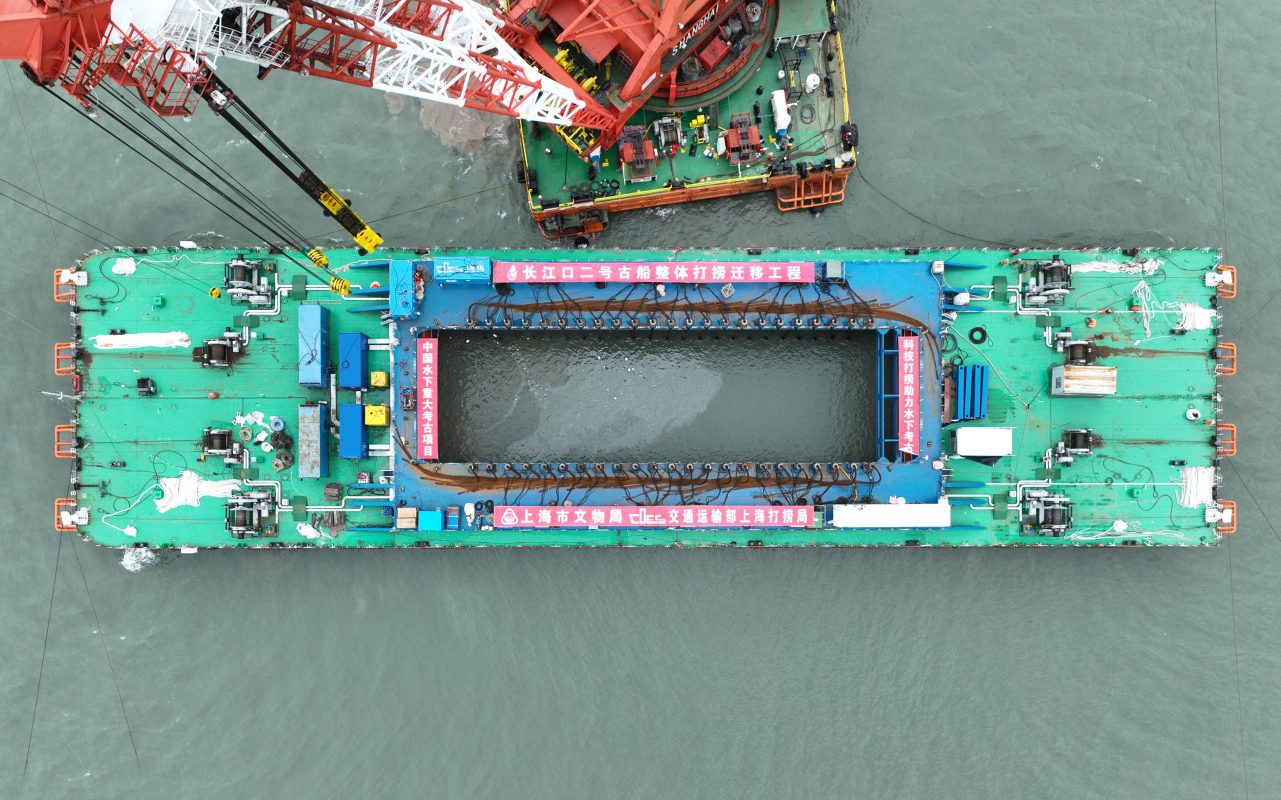
Fen Li (Photo: Xinhua)
On 21 November, Yangtze River Estuary No. 2 was lifted out of waters using 22 giant arched steel beams, which formed a caisson 48 meters long, 19 meters wide, 9 meters deep. The entire caisson with the ship inside, weighing a total of 8,800 tons, was then lifted from the river.
The salvage operation took nearly three hours to finish.
Well, this is something we know by now. What are the meanings and legacies left behind by this salvage operation?
First of all, the awe and advance in technology is evident everywhere in the entire salvage operation.
For example, the underwater archaeological survey has made comprehensive use of multibeam sonar, side-scan sonar and BV5000 panoramic 3D sonar and other technical means and methods, combined with site mapping, to present a panoramic view of Yangtze River Estuary No. 2.

Model of the ancient shipwreck (Photo: Courtesy of China National Cultural Heritage Administration)
What’s more, it adopts the first technology in the world that deploys arc beams to produce non-contact migration of cultural relics to salvage the ancient vessel, which has ensured the integrity and safety of Yangtze River Estuary No. 2 to the greatest extent possible.
Secondly, with a huge number of cultural relics on board, Yangtze River Estuary No. 2 is like a ‘time capsule’ that recalls the flourish and richness of sea trade along the Yangtze River since the late Qing dynasty and confirmed the Maritime Silk Road in old days.
The salvage operation is priceless; let’s just look at the large number of exquisite cultural relics on board with the shipwreck.

A porcelain cup found in the shipwreck (Photo: Courtesy of China National Cultural Heritage Administration)
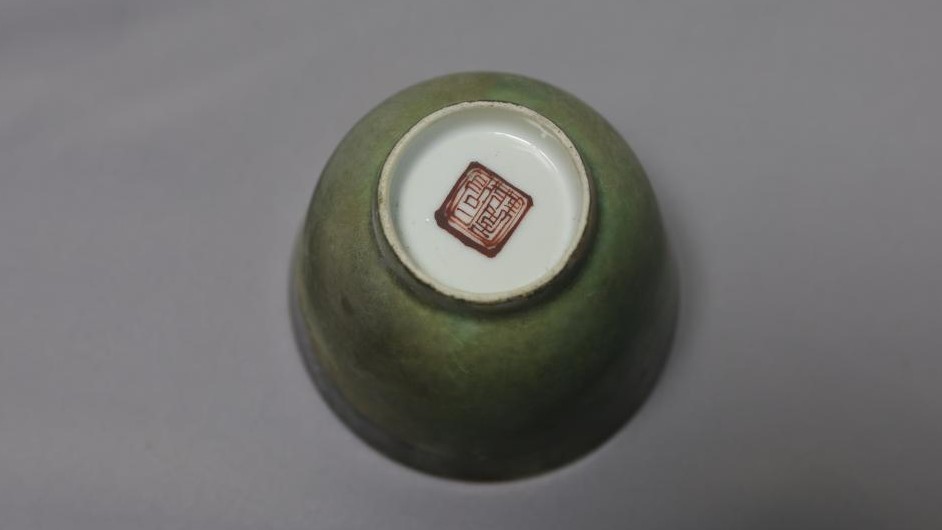
(Photo: Xinhua)
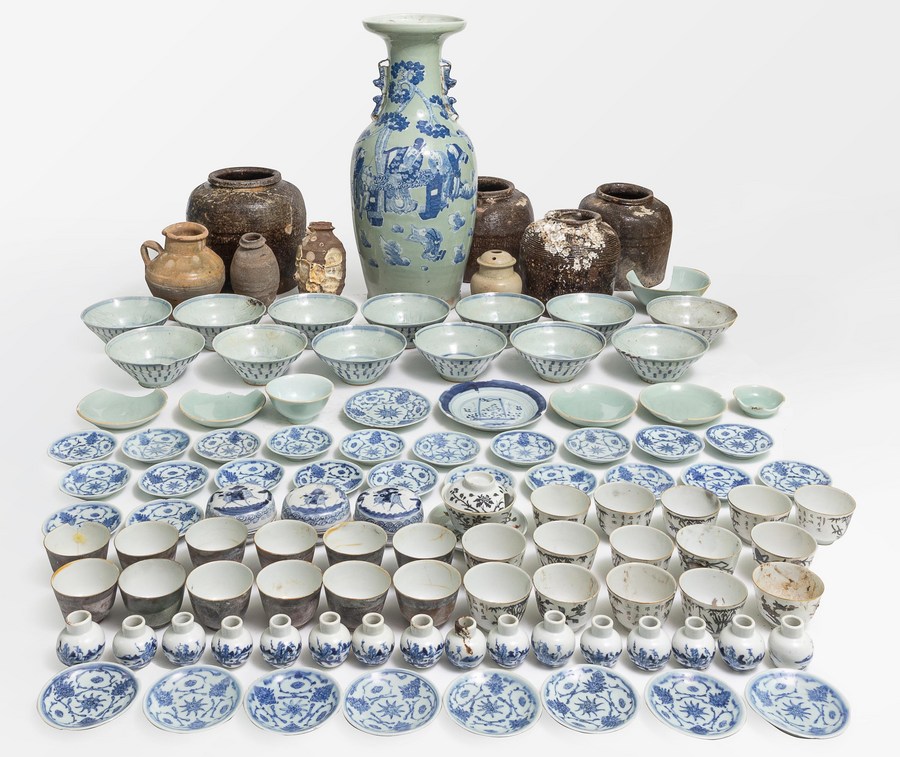
(Photo: Courtesy of China National Cultural Heritage Administration)
By now, more than 700 artefacts have been excavated from Yangtze River Estuary No. 2, including nearly 600 pieces of ceramics.
The relics not only tell us there used to be cultural exchanges between China and the West, but also reveal the life and activities on merchant ships in the late Qing Dynasty, and give important clues about the navigation history along the Yangtze River.
We are so proud to be able to witness and to rejoice this moment together, but apparently, this is not the end of the story.
According to the local government, a shipwreck museum will be built in the future, where the cargo, boat structure and even the mud attached out of water will be the subjects of archaeological research.
We thus expect some quality exhibitions that tell the past life of ancient ships, of Maritime Silk Road, the significant value of salvage operation, all made possible with the high-tech development of underwater archaeology in China.


